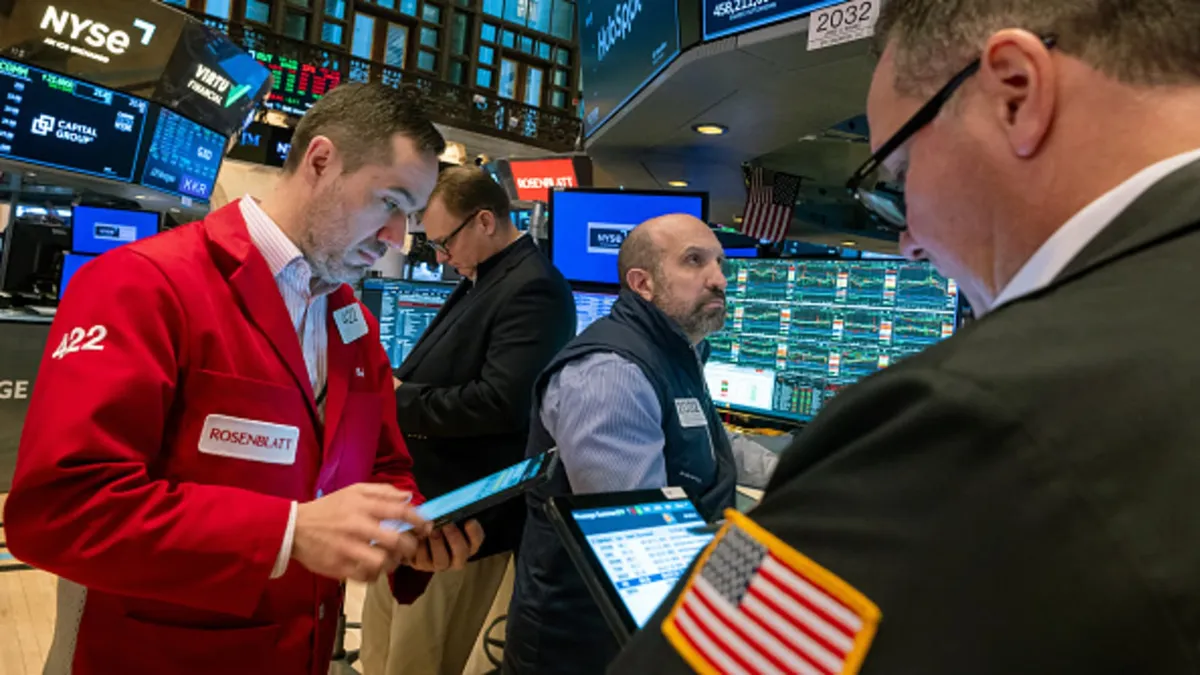
S&P 500 futures experienced a slight uptick, indicating a potential continuation of the index's recovery from correction territory. This follows a tumultuous three-week period on Wall Street, largely triggered by President Donald Trump's erratic rollout of tariff policies and a noticeable decline in consumer confidence. As the market looks for stability, the futures suggest a second consecutive day of gains, especially after the S&P 500 briefly fell into correction territory last Thursday.
As of the latest updates, Dow Jones Industrial Average futures were down by approximately 40 points, while Nasdaq 100 futures saw a modest increase of 0.3%. The mood on Wall Street improved somewhat after the release of the February retail sales report, which, despite not meeting expectations, provided a sigh of relief among traders. Retail sales rose by 0.2% month-over-month, falling short of the Dow Jones estimate of a 0.6% increase. However, when excluding autos, the increase was more favorable at 0.3%, aligning with economists' forecasts.
Last week proved to be particularly challenging for equities, with the Nasdaq Composite sinking deeper into correction territory. The small-cap Russell 2000 approached a bear market, defined as a 20% decline from its peak. The S&P 500, too, faced its own struggles, dipping into correction territory before managing to rebound above that threshold. The Dow experienced its most significant one-week decline since 2023, losing 4.4% overall.
The recent market turmoil can be attributed to investors grappling with the rapidly evolving tariff policies of President Trump, combined with mounting signs of economic weakness. This uncertainty has led many to question whether the current stock market correction might evolve into a bear market. According to Adam Parker, CEO of Trivariate Research, there are clear indications of a growth slowdown, moving beyond mere growth concerns. “The question remains: will we receive negative guidance in April?” Parker remarked during an interview on CNBC's Closing Bell on Friday. He suggested that a more defensive strategy may be warranted, as a quick recovery in fundamentals seems unlikely.
Despite the prevailing market challenges, Treasury Secretary Scott Bessent expressed his lack of concern regarding the recent pullback. In an appearance on NBC's Meet the Press, he stated, “Corrections are healthy and normal.” Bessent emphasized that sustained upward trends can lead to financial crises, citing the market's euphoric behavior before the 2008 downturn. He cautioned that while there are no guarantees against a recession, the Trump administration is actively working to prevent a financial crisis from occurring.
The current landscape of the S&P 500 and broader market is characterized by uncertainty and volatility, driven by external economic factors and internal policy changes. As investors navigate this complex environment, the emphasis remains on monitoring economic indicators and adjusting strategies in response to evolving market conditions.